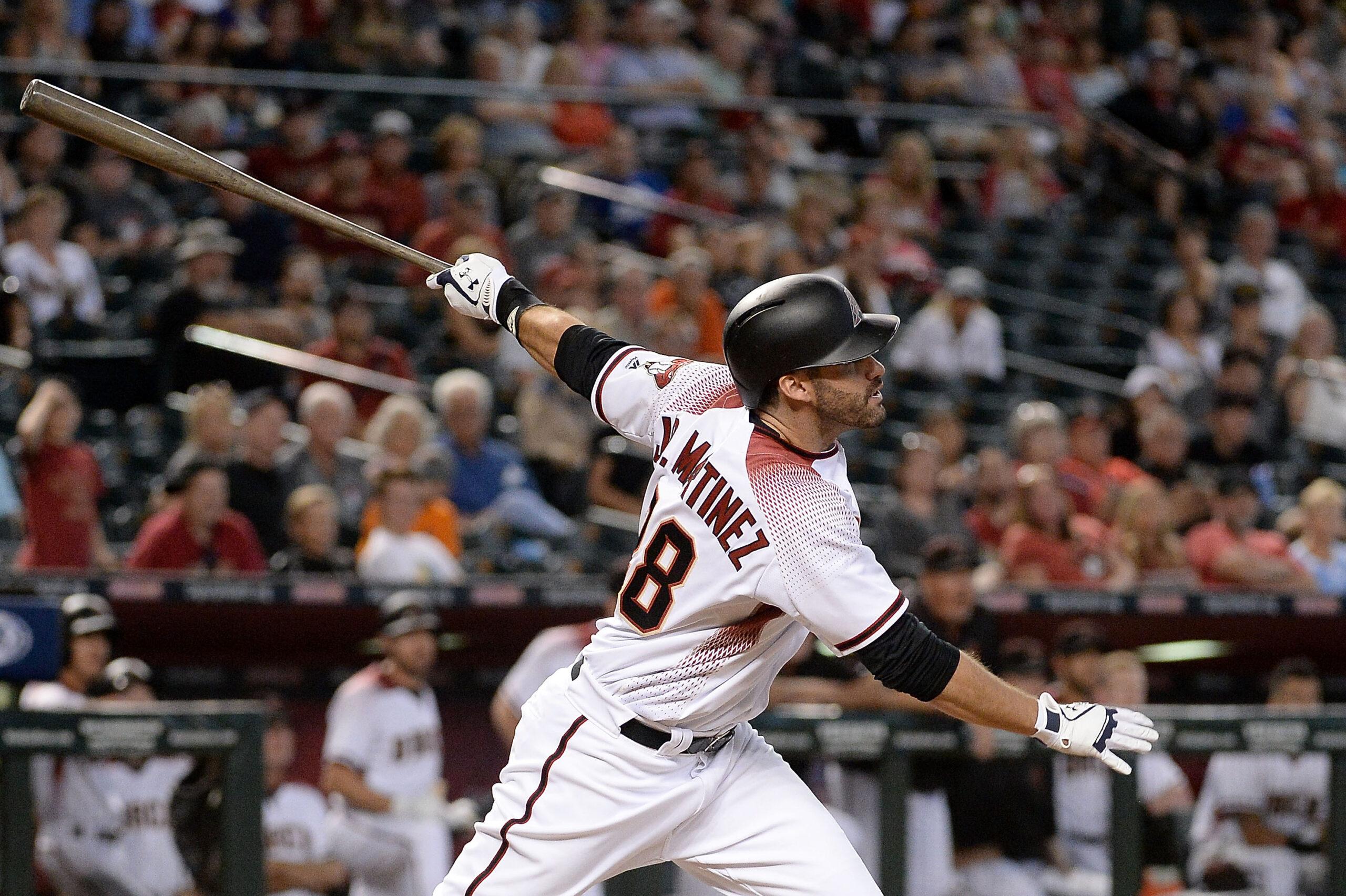
The offseason’s longest staring contest finally concluded on Monday with the winter’s most predictable signing coming to fruition. Boston reportedly agreed to a deal with free-agent slugger J.D. Martinez, providing a much-needed boost to the Red Sox’s lineup and giving them a matching response to the Yankees’ acquisition of Giancarlo Stanton earlier this winter.
Less than two weeks after Ken Rosenthal reported that Martinez was “fed up” with Boston and “would rather sign with another club,” the two sides found common ground on a five-year, $110 million contract with opt-out opportunities after the second and third years. None of the posturing from Martinez nor agent Scott Boras could obscure the facts that Boston’s Dave Dombrowski wanted to add an elite power hitter, Martinez was the only such player available in free agency, and Boston was seemingly the only contending team with the money and lineup spot to bid nine figures for Martinez’s services.
That doesn’t mean other teams shouldn’t have gone that high for Martinez, who despite his one-dimensional contributions is a strong player because that one dimension is just about maxed out. Any contender outside the Bronx could use his bat in its 2018 lineup. He’s coming off an age-29 season in which—despite missing the first month due to a Lisfranc injury—he crushed pitching in both Detroit and Arizona with a .303/.376/.690 batting line that represented the best of his career and included the highest slugging percentage for any hitter since Barry Bonds.
And Martinez’s hyperbolic performance last year wasn’t a single-season anomaly; since 2014, when Martinez first emerged in Detroit, he’s ranked among the league’s best hitters. Only Mike Trout has a higher slugging percentage than Martinez’s .574 in that span, and only Trout, Votto, and Giancarlo Stanton (barely) have a better overall batting line by wRC+, which adjusts for a player’s home ballpark and league context.
Best Qualified Hitters, 2014-17
By way of further comparison, Martinez’s rate stats are nearly identical to Stanton’s through the last four years, meaning Boston adds a like-for-like complement to its biggest rival’s biggest offseason acquisition.
The AL East’s Newest Sluggers, 2014-17
Stanton walks more and is a tad more fond of homers, but Martinez’s overall production mirrors Stanton’s, and last year, even with the former Marlin winning MVP honors and crushing 59 homers, Martinez actually owned the superior batting line. Of course, Stanton is two years younger than Martinez, and he’s a better baserunner and defender, but Boston isn’t paying Martinez Stanton money or surrendering any prospects in a trade. And with their outfield already full of two-way talents in Mookie Betts, Jackie Bradley Jr., and Andrew Benintendi, the Sox can afford to place Martinez in the DH spot and let the homers and Green Monster doubles commence.
Before Monday, Boston hadn’t made ripples this winter, let alone division race-shifting waves. The Red Sox won the AL East last year but exhibited some significant flaws, and with the wild card-winning Yankees poised to improve in 2018, Boston’s entire offseason transaction log to date—re-signing Mitch Moreland and Eduardo Núñez—underwhelmed.
Boston’s pre-Martinez lineup was full of players whose likely 2018 batting line ranged from slightly below average to slightly above. Per the ZiPS projection system, for instance, every starter except Betts and whoever wins the catching job projects for an wRC+ between 95 and 111, on a scale in which 100 is league average. Even assuming that young, promising players like Benintendi and Rafael Devers improve in their sophomore seasons, Boston’s lineup still lagged compared to those in the Bronx and Houston, but Martinez helps close that gap and boosts Boston in what looks to be the majors’ tightest division race.
And in an offseason characterized by historic inactivity and simmering player-owner tension over free-agent pay, Martinez’s contract appears to be a significant underpayment for Boston. Back in November, MLB Trade Rumors predicted that he would sign for six years and $150 million; FanGraphs’ Dave Cameron forecast a six-year, $156 million deal. The opt-out clause, by which Martinez can re-enter free agency sooner than five years if his production continues, makes the deal more palatable for the player, but Boston has to be thrilled to add a bat of his caliber for such a relative bargain. It’s not often that a team can find a new best hitter in February, but this winter is weird, and the Red Sox took advantage.

